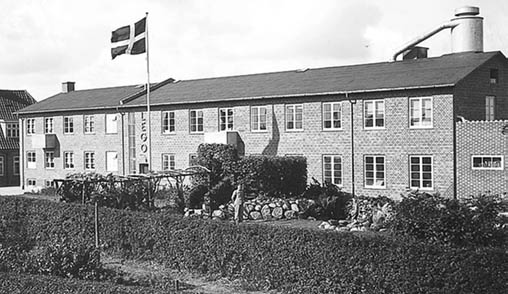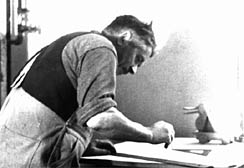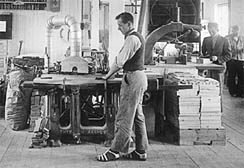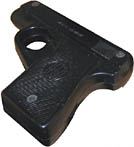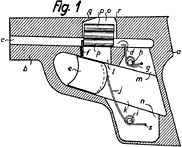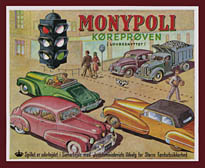World War II
Denmark and Norway were invaded by Germany on 9 April 1940 as part Operation Weserübung. An operation designed to prevent the possible Franco-British occupation of these countries. Although Danish forces were clearly outmatched, they still offered some resistance, particularly the Royal Guard in Copenhagen and units in Southern Jutland. However King Christian X, realizing that his forces were no match for the Germans, surrendered on the same day in exchange for domestic political independence.
Because Denmark was of relatively little military importance to Germany the Danes were able to exercise a remarkable degree of autonomy. It wasn’t until 29 August 1943, as a result of increasing resistance, that Germany finally dissolved the Danish Government and declared martial law.
Although Denmark turned out to be, perhaps, the least affected European country in the War, life was nonetheless difficult under the occupation. Basic commodities, such as coffee, sugar or heating oil were at first rationed and later became simply unavailable. Many Danes, including the Kirk Christiansens, resorted to cutting peat from a bog for heating fuel.
By the late 1930’s Germany was the largest importer of toys into Denmark, but after the start of the war the German companies switched to War production and it became impossible to import toys. So a few Danish toy companies essentially had the entire market, such as it was, to themselves.1 1. E.g., the Copenhagen-based Tekno, which manufactured die-cast cars, also expanded during the War. Their story during the 1940’s and early 1950’s is remarkably similar to Lego’s. Lego not only survived the war but continued to expand: by 1942 they had 15 employees.
The Factory Fire
But of course for Ole life is never that simple. On the night of 22 March 1942 a short circuit caused an electrical fire at the factory (if your still counting this is fire number three). The fire brigade from neighboring Grindsted was summoned but the factory was a complete loss. The inventory, models, machinery, even the blueprints and plans were destroyed and insurance only covered a fraction of the losses.
At this point Ole, now in his fifties and growing weary of his numerous setbacks, wanted to give up. Rebuilding now would essentially mean starting over from scratch. It was only out of his sense of obligation to his employees and to Godtfred, who by this time had sacrificed learning any other trade, that he decided to start over again.
Once it was clear that Ole intended to rebuild many neighboring communities tried to lure the factory to their town, but Ole, realizing that his workers would have no job prospects if he relocated, decided to rebuild in Billund. He took out several loans and built a new, larger 2300 m2 building on the same grounds as the old workshop. It was the company’s first factory designed for assembly line production. By 1944 Lego had 40 employees.
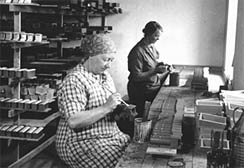
The new factory and wood toy production, ca.1943
Incorporation
In April 1944 Lego switched from a sole-trading firm to a private limited company incorporated in Denmark under the name Legetøjfabriken LEGO Billund A/S (The LEGO Billund Toy Factory Ltd.) The largest shareholders were Ole and Godtfred and the rest of the shares were distributed equally among the other three brothers and Ulla. Ole became board chairman. The rest of the board was comprised of his wife Sofia and sons Godtfred, Johannes, Karl Georg and Gerhart.2 2. Sofia served on the board as a representative of the family not directly involved in the business. This arrangement of a family member outside the business acting as an advocate for the family's interests has continued to the present day. Mogans Johansen, Kjeld’s brother in law, served in this capacity until recently. He was replaced by Kjeld‘s son, Thomas. The company reincorporated under the name Lego A/S in 1949.
Around the end of the war Godtfred married Edith, the daughter of a cheesemaker from a neighboring village, and they started a family. Gunhild was born in 1946, Kjeld on 27 December 1947 and Hanne in 1949.
Halvautomatisk Legetöjspistol
In Lego’s more recent philosophy of non-violent toys for children, a realistic looking pistol seems an unusual design, and it was. It was also one of their best-selling toys of the late 1940's. The Automatic Pistol, first produced as a wood toy in 1945 and later as a plastic toy, featured a spring-loaded mechanism that could feed projectiles into the barrel from a magazine, allowing rapid firing. The design was so novel that it became the first toy ever patented by the company.3 3. This was actually Godtfred’s second patent. The first was for a film strip holder (DK 79182, 25 Apr 1955). This invention has nothing to do with Lego, but there you are anyway.
Monypoli
Lego was a toy company, not a game company, so the 1947 boardgame Monypoli was an unusual item. It was based on the theme of traffic safety and official traffic rules. The game included metal cars, wooden tokens, a wooden die and cup, cards, a traffic sign poster and a separate gameboard.
The concept of traffic safety, and particularly the police with their hand signals, would reappear later in the System i Leg. 4 4. Virtually every Northern European toy vehicle manufacturer would produce scale traffic police. Examples exsist from not only Lego, but also Siku, Vilmer and Tekno.
Although there have been many different board games associated with Lego themes, such as Lego Creator, or the Bionicle titles, they have always been licensed products. After a 50 year absence Lego is set to release a its own board games in 2009―2010.


